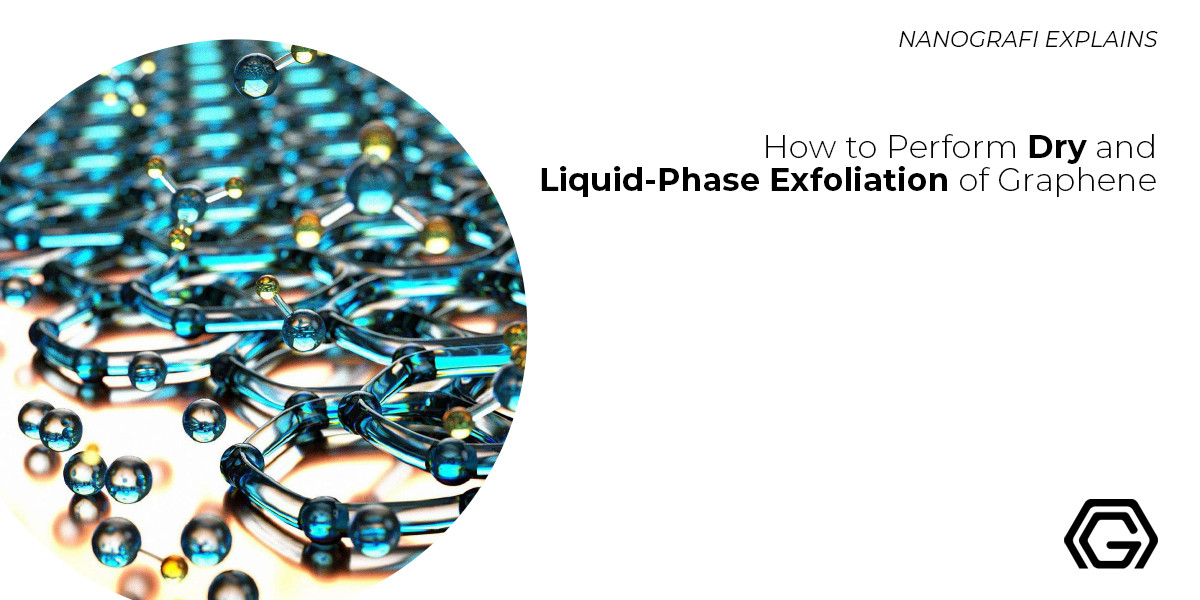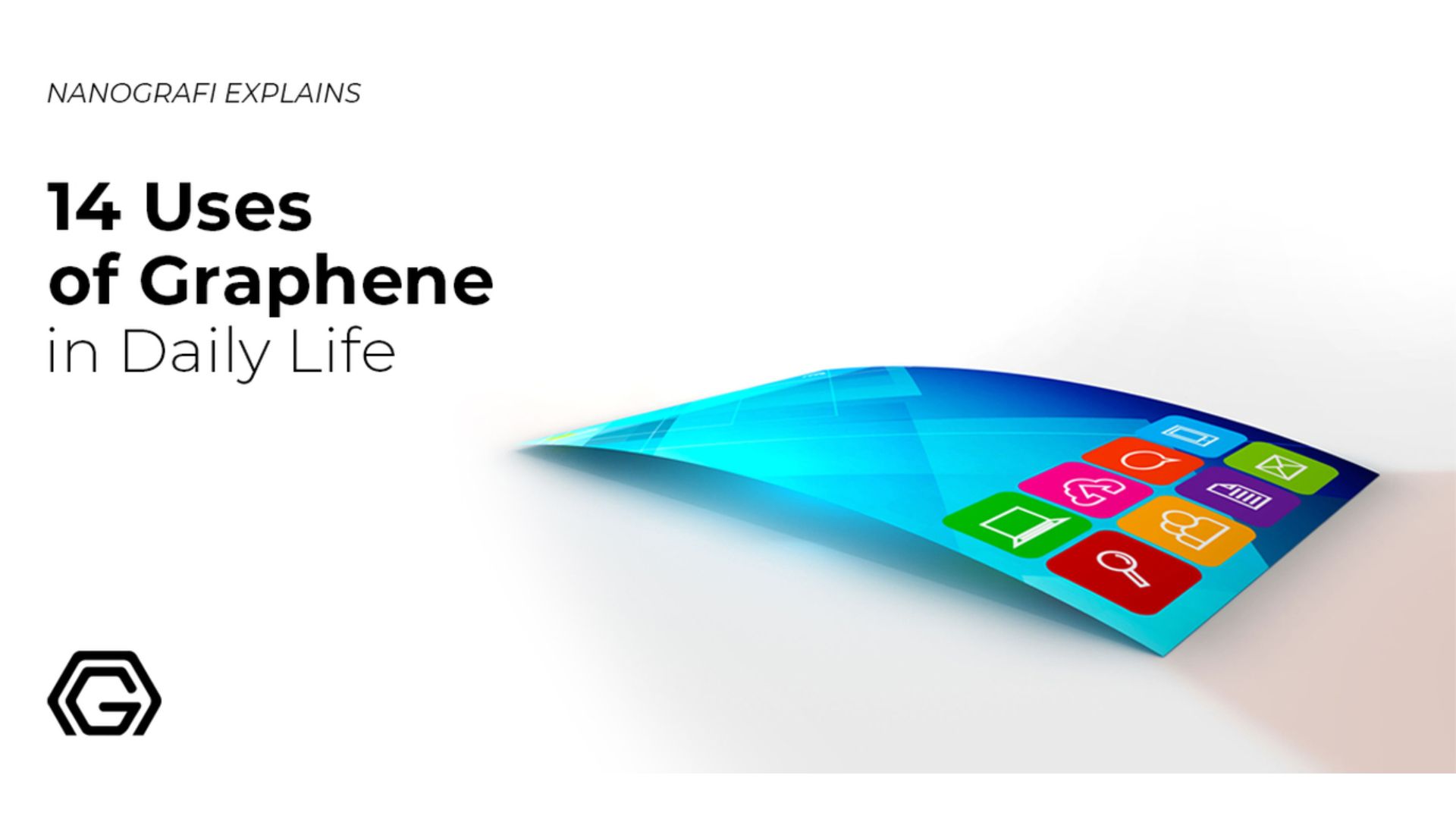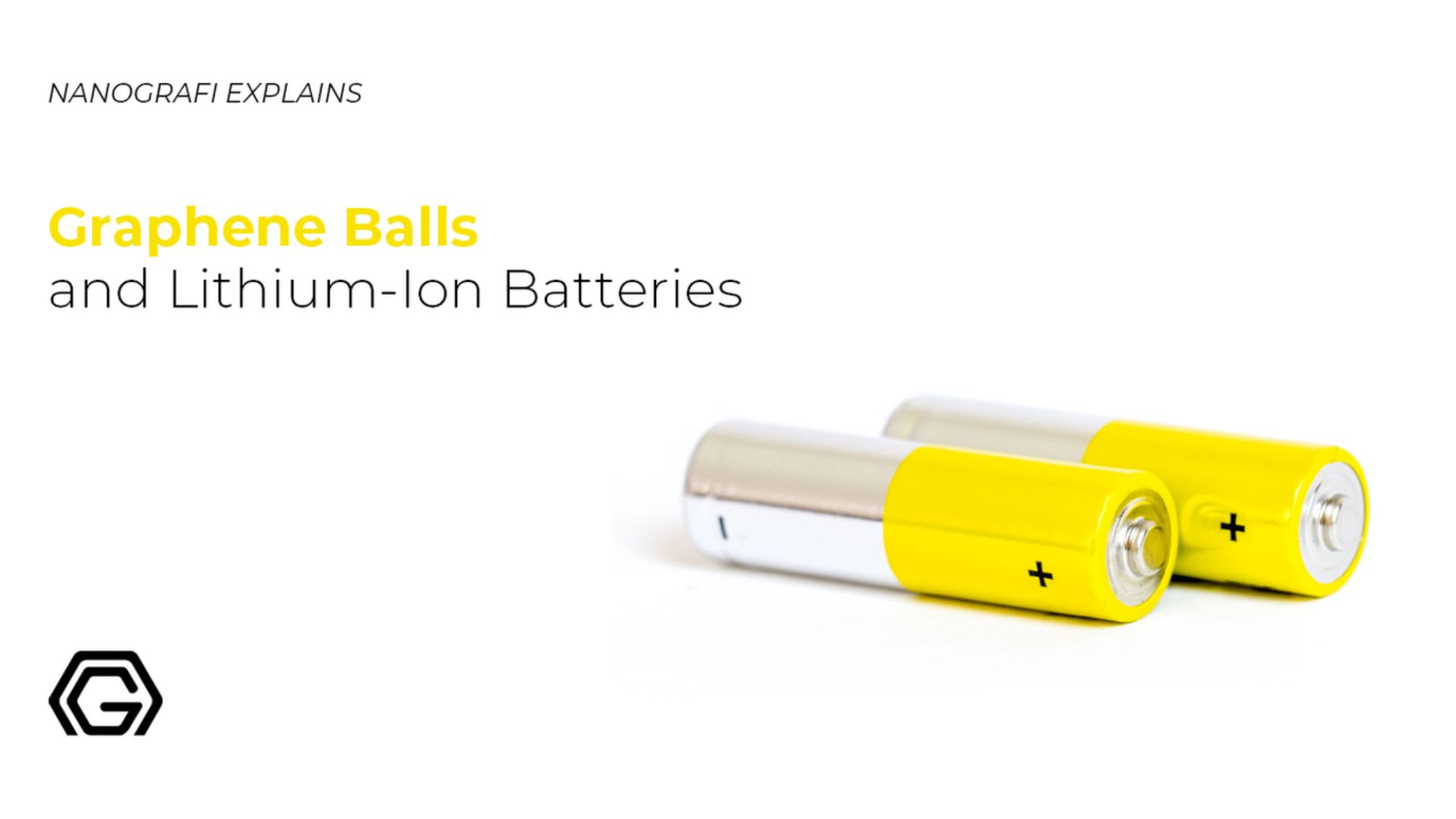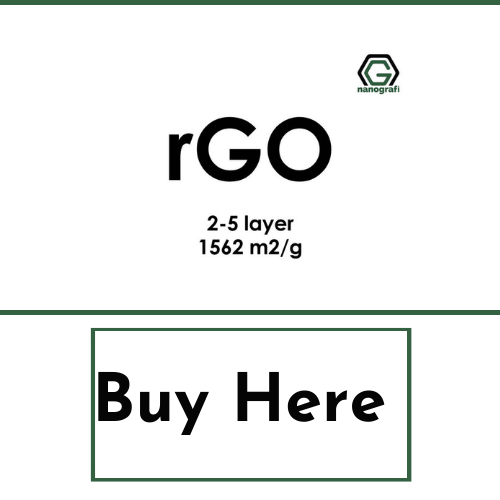How to Perform Dry and Liquid-Phase Exfoliation of Graphene
Graphite exfoliation is an extremely low-cost and efficient method adopted to produce large quantities of high-quality graphene in industrial scales and for commercial purposes. Recently, there have been developments in mechanical exfoliation in order to synthesize graphene.
The two-dimensional nanomaterial, graphene, has been attracting a lot of attention worldwide since its discovery in the 2000s becoming a practically interesting material to conduct a huge number of studies because of its remarkable properties and promising applications. Nanografi presents top-quality graphene products and solutions for enhanced projects, productions, and advanced technologies at every level.
Introduction
Considering its electronic properties, graphene as a monolayer is a semi-metallic agent with massless Dirac fermions carriers and the maximum current density tolerance of several million times as big as that of copper. Monolayer graphene has an extremely high resistance to gas permeation, the highest transmittance quality and high thermal conductivity of 3000 W mK-1. These excellent properties make graphene as a promising agent and a suitable material for a broad range of applications in advanced composites, paint, energy storage, photonic devices, electronic devices, sensors, metrology and biology.
Graphite Exfoliation and Graphene Production
Regarding the extensive range of applications of graphene, a large number of techniques and methods have been proposed to achieve graphene with the highest quality and in larger scales so far. All the methods a graphene synthesis are categorized into two main classes as top-down and bottom-up methods. The bottom-up method mostly involves the synthesis of graphene using chemical reactions from molecular building blocks in order to achieve covalently 2D networks of carbon. The top-down method however, involves the exfoliation of graphite mostly. As a class of bottom-up techniques of graphene synthesis, epitaxial growth and chemical vapor deposition can yield high-quality graphic with practically small number of defects. Accordingly, the resulting graphene is considered a perfect candidate to be employed in the electronics. Nevertheless, bottom-up techniques which are based on substrates suffer from expensive production process and limited scales and consequently cannot be adopted when mass production of graphene is required. To overcome this problem, physical top-down technique of graphite exfoliation in liquid phase has been developed in order to achieve large-scale production of graphene.
Exfoliation Method of Nanoscale Material Production
Technically exfoliation involves the process through which bulky materials expand by factors as high as hundreds along the special c-axis with high temperature resistance and low density. Exfoliation technique is used for high-quality production of nanomaterials and is widely used in two common ways reversible and irreversible exfoliation methods. The reversible exfoliation was first introduced in the 1960s and the irreversible exfoliation back in the 1910s. Specifically, exfoliation is a phase transition occurring at well-defined elevated temperatures and heating is regarded as an important factor in processing this technique. There are three different heating methods for exfoliation techniques including excessive electrolytic intercalation, external heating and internal heating. The excessive electrolytic integration technique is basically a chemical exfoliation, whereas the internal and external heating are considered mechanical exfoliation 2.
Exfoliation is highly important in graphene and clays production as the precursors contain layers structures bound through Van der Waals and ionic forces. More specifically, exfoliation involves a series of operations to separate one layer from another. Graphene exfoliation is a totally distinct mechanism as well as dispersion since graphite cannot tolerate any net charge between its layers. However, it can be intercalated easily by metallic salts and molecules. In the case of exposure of exfoliate with graphene to high temperatures, the compounds decompose into gaseous agents and subsequently, develop excessive pressure in the direction c-axis. This fast pressure shock leads to the expansion of graphite that is mainly dependent on the compound the nature of the thermal shock and the graphic particle size 3.
Dry Mechanical Exfoliation Mechanism
Based on the top down approach, graphene is prepared via exfoliating graphite according to which layers of graphene can be peeled mechanically from the bulky graphite layer by layer. To do so, it is necessary to overcome their Van der Waals interactions between the adjacent layers of graphite to finally achieve layered networks of carbon as graphene. Generally, there are two mechanical forces to exfoliate graphite in order to achieve graphene namely lateral and normal forces. The normal force is adopted to overcome the Van der Waals in the course of peeling to graphite layers apart similar to micromechanical cleavage. On the other hand, the lateral force is applied to promote the relative motion between two graphite layers based on graphite self-lubricating capability in the lateral direction. It should be taken into consideration that all the common exfoliation techniques consider these two mechanical pathways as the prerequisites in graphene production. There is a fact that the controlled exfoliation of graphite could lead to a high quality phase with excellent efficiency if these two mechanical forces are combined. In addition to this, there is another supplementary method called fragmentation effect which is done in the course of exfoliation. The force that is generated through exfoliation technique is capable of fragmenting larger graphite particles and even graphene layers into smaller ones. Particularly, the fragmentation effect involves double face tactics. Firstly, it is able to reduce graphene's lateral size which is not desirable for obtaining large area graphene second, the fragmentation effect facilitates the process of exfoliation things smaller craft lakes to be exfoliated easily compared to larger lungs mostly because of the smaller collective Van der Waals interaction found in the layers and smaller graphite flakes1.
To get more information about the uses of graphene in daily life,
you can read our blog post here.
Micromechanical Cleavage
Micromechanical cleavage of Highly Ordered Pyrolytic Graphite (HOPG) is the so-called method that led to the synthesis of graphene and got the Nobel Prize in physics in 2010. Mechanical cleavage involves the cleavage of graphite into graphene layers from the bulk HOPG surface. In this dry mechanical exfoliation technique, the Scotch tape is applied to the surface of its HOPG with the consecutive exertion of the layers. If this mechanical operation is repeated several times, the graphite layer is worn thinner and thinner to finally turn into a single layer of graphene. In fact, this method could be employed to prepare graphene flakes of large area and high quality. The graphene production process that is based on this method possesses outstanding properties. Nevertheless, it should be taken into consideration that summit micromechanical cleavage is extremely laborious and time-consuming and could be limited only to laboratory scales 1.
Sonication
Another method of graphene synthesis by exfoliation is assisted by liquid phase of graphite suitable for large-scale production of graphene. Regarding the satisfactory results in dispersing carbon nanotubes sonication, high-yield production of graphene is obtained when sonication is adopted in the liquid phase of graphite 1.
Ball Milling
Ball milling is among the most common technique in industries and a good candidate for the production of large-scale graphene taking the advantage of shear force. Ball milling instruments and machinery employ two forces responsible for fragmentation effects and exfoliation. The basic force is called Shear Force being an excellent mechanical technique of exfoliating and highly desired to obtain graphene particles with larger size. The secondary Force originates from the collision or vertical impact by the balls rolling leading to the breakdown of larger flakes into smaller ones1.
Dry mechanical exfoliation of graphite has turned out to be a promising technique for a large-scale production of graphene. Even though there are different techniques available to be utilized in graphene production, the mechanical mechanism in the process of exfoliation in all the mentioned techniques are similar leading to a Shear Force where there are nominal forces. The main issue from the mechanical aspect is to overcome the Van der Waals forces between the graphite layers to achieve layers of graphene.
Graphite Exfoliation and Graphene Production
Liquid-phase exfoliation of graphene in distinct media such as ionic liquids, solutions of water/polymer or surfactant, green solutions and organic solvents including has been developed with satisfactory outcomes since the late 2000s. Generally, liquid-phase exfoliation of graphene is performed according to protocols of a number of techniques including high-shear mixing, microfluidization and sonication. Exfoliation of graphite is known as a remarkably cost-effective and practical technical used to produce large quantities of high-quality graphene in industrial scales. There are developments in mechanical exfoliation besides growing demands in industries to obtain graphene. The two-dimensional nanomaterial, graphene, has been attracting a lot of attention worldwide since its discovery in the 2000s becoming a practically interesting material to conduct a huge number of studies because of its remarkable properties and promising applications. Considering its electronic properties, graphene as a monolayer is a semi-metallic agent with massless Dirac fermions carriers and the maximum current density tolerance of several million times as big as that of copper. Monolayer graphene has an extremely high resistance to gas permeation, the highest transmittance quality and high thermal conductivity of 3000 W mK-1. These excellent properties make graphene as a promising agent and a suitable material for a broad range of applications in advanced composites, paint, energy storage, photonic devices, electronic devices, sensors, metrology and biology 1.
Regarding the extensive range of applications of graphene, numerous techniques have been suggested to achieve graphene with desirable quality and in industrial scales so far. All the methods a graphene synthesis are categorized into two main classes as top-down and bottom-up methods. The bottom-up method mostly involves the synthesis of graphene using chemical reactions from molecular building blocks in order to achieve covalently 2D networks of carbon. The top-down method however, involves the exfoliation of graphite mostly. As a class of bottom-up techniques of graphene synthesis, epitaxial growth and chemical vapor deposition can yield high-quality graphic with practically small number of defects. Accordingly, the resulting graphene is considered a perfect candidate to be employed in the electronics. Nevertheless, bottom-up techniques which are based on substrates suffer from expensive production process and limited scales and consequently cannot be adopted when mass production of graphene is required. To overcome this problem, physical top-down technique of graphite exfoliation in liquid phase has been developed in order to achieve large-scale production of graphene 2.
To get more information about graphene balls,
you can read our blog post here.
Exfoliation Method of Nanoscale Material Production
Technically exfoliation involves the process through which bulky materials expand by factors as high as hundreds along the special c-axis with high temperature resistance and low density. Exfoliation technique is used for high-quality production of nanomaterials and is widely used in two common ways reversible and irreversible exfoliation methods. The reversible exfoliation was first introduced in the 1960s and the irreversible exfoliation back in the 1910s. Specifically, exfoliation is a phase transition occurring at well-defined elevated temperatures and heating is regarded as an important factor in processing this technique. There are three different heating methods for exfoliation techniques including excessive electrolytic intercalation, external heating and internal heating. The excessive electrolytic integration technique is basically a chemical exfoliation, whereas the internal and external heating are considered mechanical exfoliation 3.
Liquid-Phase Exfoliation of Graphene
In order to produce graphene, its bulky and multilayered form graphite can be exfoliated so easily in liquid phase taking the advantage of a number of techniques namely sonication to extract single-layer graphene. In general, the liquid phase exfoliation is performed in three separate sections in the order of dispersion a graphite in a solvent, its exfoliation based on the techniques mentioned earlier and purification. It is possible to produce graphene flakes via graphite surfactant-free exfoliation and wet chemical dispersion in inorganic solvents. After the exfoliation is carried out, the inter-sheet attractive forces are balanced through solvent-graphene interactions. Technically, ideal solvents to disperse graphene must be capable of minimizing the interfacial tension between the graphene flakes and the solvent 4.
Techniques of Liquid-Phase Exfoliation
Liquid phase exfoliation is performed traditionally based on two main exfoliation techniques of graphite including shear forces in high-shear mixer and cavitation in sonication. In recent years, another technique known as microfluidization has also been suggested as an efficient technique to exfoliate graphite in inappropriate aqueous solutions under high-shear rate. Liquid phase exfoliation is a straightforward technique with excellent potential to be applied in high-scale production of graphene. The basic instrumentation high-shear mixing or sonication are generally available in the market. Furthermore, the conditions under which the liquid phase exfoliation is processed are moderate and do not require high pressure or vacuum conditions. Nevertheless, the application of sonication in larger scales of liquid phase exfoliation has faced challenges mostly because of the low concentration of graphene and the high energy consumption in the course of their fabrication procedure. Microfluidization method and high shear-mixing is known as a newly emerging liquid phase exfoliation technically capable exfoliating graphite.
Sonication
As an effective exfoliation method with the potential to fabricate monolayer or double-layer graphene, sonication has been employed so extensively in the past years. Sonication is employed to trigger physical chemical changes in liquid systems through generating cavitation bubbles. As the ultrasonic waves propagate throughout the medium, rarefactions and compressions exert low and high pressures the push molecules forward and backward. In the course of the rarefaction, bubbles in micron size begin to form and grow bigger with each cycle until an unstable state is achieved and powerful shockwaves are imploded. Specifically, there are two main techniques of sonication including tip sonication and bath sonication that are employed simultaneously or separately in order to fabricate single or double layer of graphene sheets through exfoliating graphite.
High-Shear Mixing
High-shear mixing is a technique that has been employed in graphite exfoliation under shear forces with satisfactory results. Besides the use of high-shear forces through using high-shear mixers has been studied among that scalable techniques of graphite exfoliation. The shear exfoliation resembles sonication technique since aqueous solutions can be employed to facilitate the graphite exfoliation and create unstable dispersion environment as well as eliminate the use of hazardous organic solvents. In fact high-shear mixing of graphite in proper solvents could lead to the highly concentrated dispersion of graphene sheets. More specifically, once a local shear with proper magnitude is applied, graphite exfoliation occurs in turbulent and laminar regions. Compared to sonication, this method has shown to have higher efficiencies.
Microfluidization
Microfluidization is a technique of high-pressure homogenization in which a high pressure is exerted to the fluid and the pressure force drives it to go through the microchannel with a diameter of 100 micrometers. This technique provides moderate exfoliation conditions in order to avoid defects. Microfluidization is most predominantly used in nano emulsification, cell disintegration, the dispersion of carbon nanotubes, food Industries and active pharmaceutical ingredients. Recently, microfluidizer instruments have been employed to fabricate graphene quantum dots and conductive inks based on graphene.
Conclusion
Liquid phase exfoliation is considered an inexpensive and promising technique in order to achieve scalable production of single- and double-layer graphene via the application of simple instrumentation. Up to this point, huge progress has been made in the quality of liquid phase extraction techniques. Liquid phase exfoliation based on sonication is employed in order to obtain dispersions of graphene. However, this technique has the disadvantage of the application of high energy consumption with low efficiency. On the other hand, the emergence of other techniques known as high-shear mixing and Microfluidization have brought new vitality the development of liquid phase exfoliation.
To get more information, you can visit Blografi.
References
Xu, Y., Cao, H., Xue, Y., Li, B. & Cai, W. Liquid-phase exfoliation of graphene: An overview on exfoliation media, techniques, and challenges. Nanomaterials 8, (2018).
Yi, M. & Shen, Z. A review on mechanical exfoliation for the scalable production of graphene. J. Mater. Chem. A 3, 11700–11715 (2015).
Yousefi, R. & Cheraghizade, M. Semiconductor/Graphene Nanocomposites: Synthesis, Characterization, and Applications. Applications of Nanomaterials (Elsevier Ltd., 2018). doi:10.1016/b978-0-08-101971-9.00002-8.
Monajjemi, M. Liquid-phase exfoliation (LPE) of graphite towards graphene: An ab initio study. J. Mol. Liq. 230, 461–472 (2017).
Dubey, K. A., Hassan, P. A. & Bhardwaj, Y. K. High Performance Polymer Nanocomposites for Structural Applications. Materials Under Extreme Conditions: Recent Trends and Future Prospects (Elsevier Inc., 2017). doi:10.1016/B978-0-12-801300-7.00005-X.
Recent Posts
-
Nanocomposites in Food Packaging
The utilization of nanocomposites in food packaging represents a significant advancement in the fiel …19th Apr 2024 -
What is the Difference Between 7075 and 6061 Aluminum Alloy?
When comparing 7075 aluminum alloy to 6061 aluminum alloy, it's essential to understand their disti …5th Apr 2024 -
Iron-Air Batteries: The Ultimate Guide
Iron-air batteries represent a significant breakthrough in energy storage technology, offering a sus …29th Mar 2024








